A Peek Through the Lens Of Fashion Photographer Amyn Nasser
Amyn Nasser is a big name in the photography industry and I had the privilege of interviewing him about his 30 plus years shooting the crème de la crème of celebrities, the covers of prestigious magazines such as Vogue, Harper’s Bazaar, Cosmopolitan, Elle, Rolling Stone, Prestige International, etc. about finding the feminine in all his subjects and I had the opportunity to listen to some words of wisdom from the man himself.

| http://amynNASSER.com | @amynNASSER |
How did you first get into photography?
My grandfather gave me a Diana camera at a young age. I was probably around 10 or 11 years old. I immediately fell in love with photography. My grandfather himself was an amateur photographer. In my late teens and early twenties I realized that I could get much closer to all the beautiful women with my camera. I started off by getting into industrial and advertising work, and then subsequently into fashion. My first job was an advertising campaign for a jean line, a subsidiary of Levis, which I shot with The Great One, hockey player Wayne Gretzky.

| http://amynNASSER.com | @amynNASSER |
That’s quite a jump to fashion photographer. How were the first few times you shot fashion photography? Were you nervous, scared? How did you handle that?
It is very different, but I was already looking at fashion magazines all the time as I was growing up. In many of the different spreads I would try to decipher how the stories come together on a regular basis. I did have some schooling in photography, but for the most part, when it came to technique and lighting and all of that, I’m self-taught. I have never assisted any other photographer. But like I said, my bedroom was full of fashion magazines filled with photos by photographers like David Bailey or Chris von Wangenheim, Arthur Elgort and Art Kane. Art Kane’s work was a mix of fashion and illustrated fashion, and illustrated fashion is somewhat similar to what I do. ‘Coz you can see my work transcends; it illustrates an idea, so to speak, a spontaneous snapshot esthetic, a story, a narrative. So I would study these photographers quite a lot. Another photographer whose work I loved and studied quite a bit was Bert Stern, again illustrative fashion with a story. I loved Avedon’s work too, as well as Irving Penn. But for the aspects of my nudes for example, I studied people like Edward Weston. If you look at David Bailey’s work, he’s done architecture and nudes – not just fashion photography. I didn’t even give the transition to fashion a thought. But I remember at the beginning it was challenging to figure out how you bring it about, and you have to overcome that fear. Another point is you’ll see from my fashion stories that I move from color and certain color tones to a tonality of black and white where it ties into the story so it tells one story. It’s tough to do this and knowing which fashion it would work with. A fashion editorial should tell a story not document it; after all it is an editorial. And it should contain current events as it influences the viewer. It is not just all about the clothes, but rather the reflection of the current events in the world. It then influences and empowers women and men.
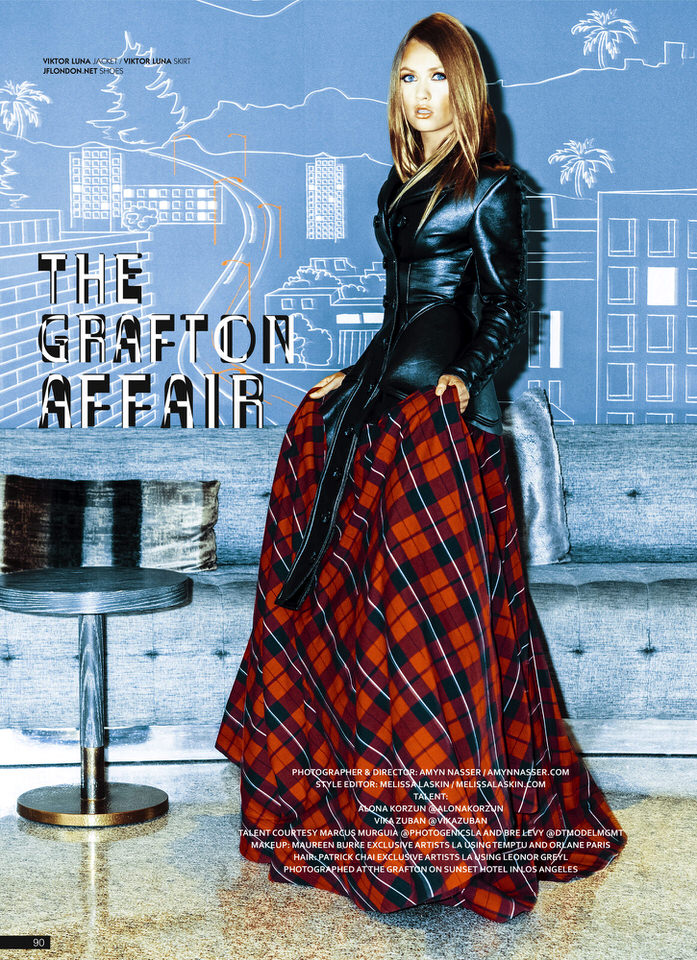
| http://amynNASSER.com | @amynNASSER |
Do you find any relation between architecture photography and erotica photography?
Well, I like to bring out the sensuality of a city or a home or whatever. So you can argue that I’m always looking at it from a feminine side. It may be symmetrical, it may be hard construction, but I’m always looking for the feminine aspect. It’s the sensuality that draws us in. Even a brick in a building has a story to tell.
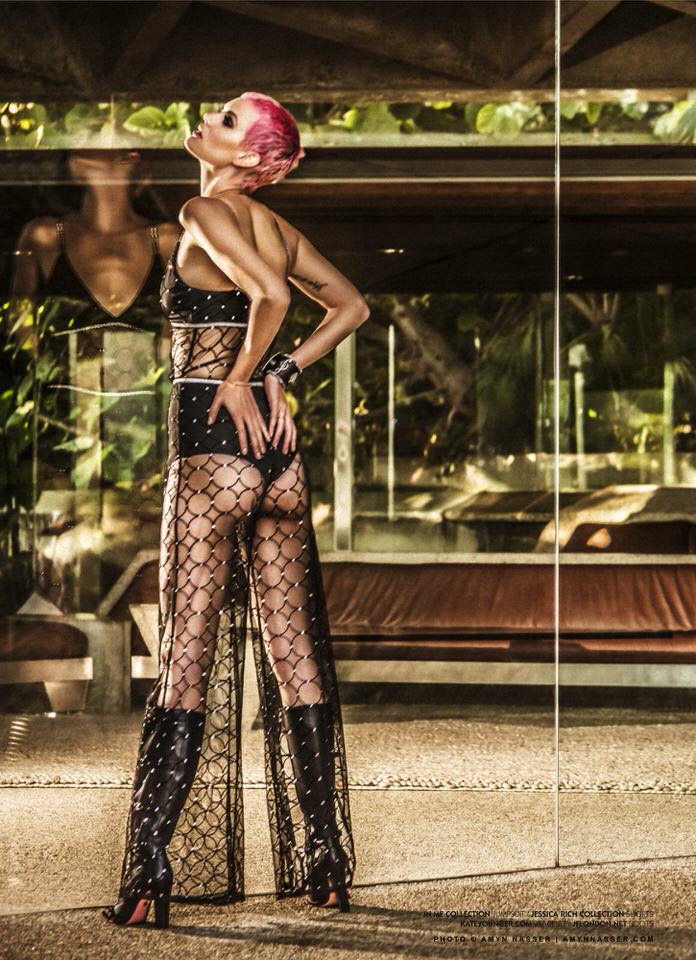
| http://amynNASSER.com | @amynNASSER |
Try JPEGmini Pro For Free Now!
What type of photography do you most identify with?
That’s an interesting question ‘coz I’m attracted to anything conceptual in photography. If you know the works of Thomas Ruff for example; he’s a fine art photographer. If you look at his works, he goes from portraiture to nudes – his erotica is extremely beautiful and strong. There is a body of work he did that comes from him taking pieces from porn sites, and how he manipulates this. So any type of photography that stimulates the senses is what I’m attracted to. Daido Moriyama’s work is excellent and very blunt to the point, no matter what your opinion. The gist of it is to make a statement, drive emotions and let the viewer decide. It’s hard for me to nail down ONE particular type of photography that I’m attracted to; it’s all about the subject matter and what it’s saying.

| http://amynNASSER.com | @amynNASSER |
When it comes to sensuality, how do you make the subject feel less self-conscious and more comfortable?
The most important thing is how a photographer comes across. It’s a mind as well as body language. And being assertive and confident is very important because the subject, the woman or male model, they are reading off you. So, I don’t pay particular attention to someone who’s naked in front of me. I’m more about engaging their intellect, and bringing about the idea I have or I share with them. Because, often, I’ll go over what I’m trying to do, but I will also listen to what they’re saying and make sure that they are comfortable. I do that from the onset and at the same time I also work rather quickly, so I don’t let them get into a situation where they focus on the fact that they have no clothes on, because they are engaged in what we are doing. To me, it’s very important because it establishes trust, and you don’t want to break that trust.
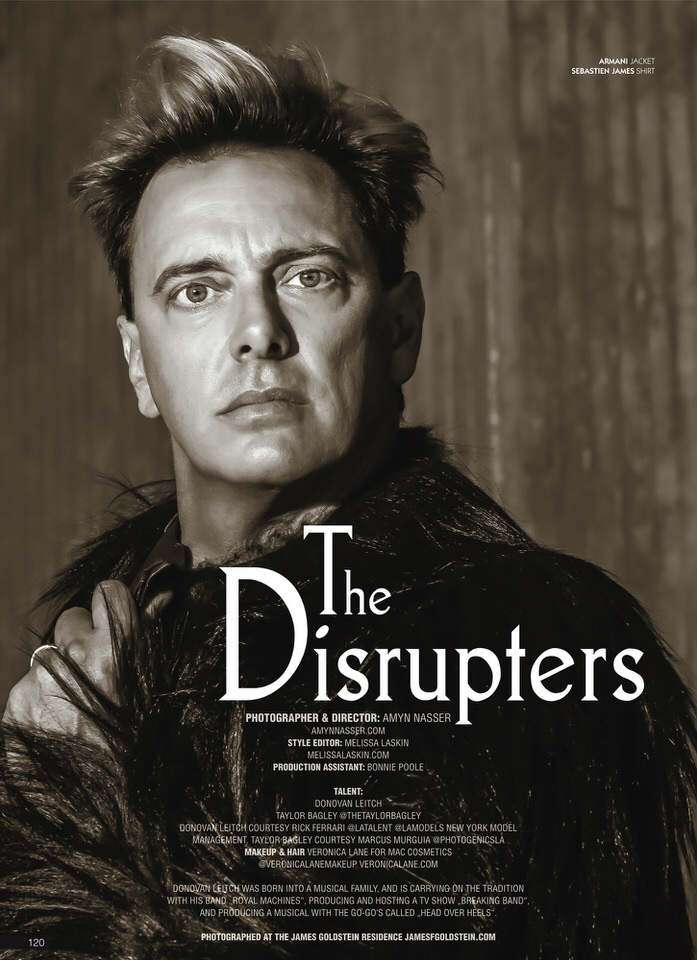
| http://amynNASSER.com | @amynNASSER |
So, along with you being assertive and feeling comfortable in front of them; does that translate into your studio as well? What’s your studio like?
I’m a photographer who likes to work in different places. Whether a house, second location, hotel or rented studio – the entire environment becomes like that. Hair, make-up, styling; everything becomes the same mindset, because it doesn’t allow for the model to feel uncomfortable in any way. And I work quickly in a spontaneous snapshot aesthetic. When the day is done, I end up with a lot of good shots. Art Directors often tell me that it’s very hard to choose from my work, because there’s so many great takes in the final edits or culls. There was a campaign I did in Paris. We were supposed to have eight different visuals, and the Art Director came back with 220 for the eight, as there were so many great shots. It’s because I am capturing that split second capture.
During one of your shoots how many photos do you take? Because if you end up with 220 final selects, how many did you start off with?
It’s often 3500-4000 (sometimes more). In the film days it used to be 8-10 roles per shot, so it was very easy to come back with 100-150 rolls of film. In these days I’m doing the editorials that you’ve been seeing; they’re 16 page editorials. Normally editorials are 8 pages long. For the December/January issue, I had the cover and a total of 90 pages, which included 5 Fashion stories of 16-18 pages and one Architecture story – a total of 6 stories. On a shoot like that it’s very easy to come back with 25,000 images.
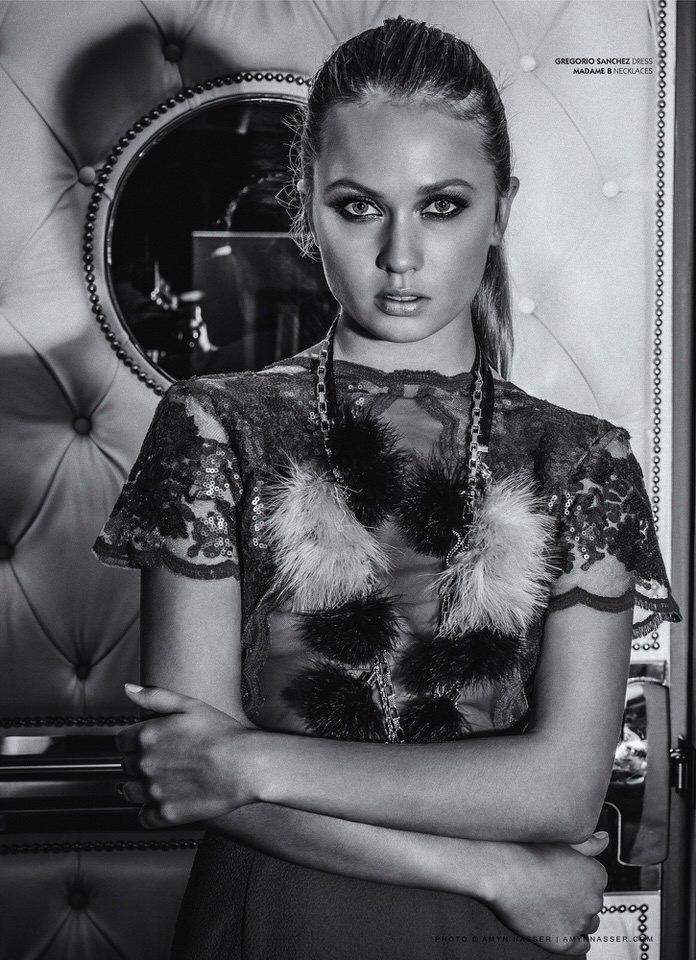
| http://amynNASSER.com | @amynNASSER |
Walk me through your editing process. What’s in your tool bag?
The memory cards are downloaded. They are all raw files, so the first thing that happens is that each shoot goes into a shoot folder. And my way of cataloguing my photo shoots has been a numerical order with a four-digit number at the beginning. Inside that folder, I create another folder for all the raw files. Every one of the raw files has the same four-digit number in front of the number the camera assigns it automatically. My Nikon NEF file also comes with JPEG. All the JPEGs are put through JPEGmini so the file size is substantially reduced. Once that’s done I bring it into the Adobe Lightroom and keyword them en masse. The JPEGs are run into Photo Mechanic where I do a first set of edits, then a second and a third so that it’s narrowed down. I also take all the JPEGs and put the location data on it. These GPS coordinates I also do through Photo Mechanic. Now these files are sitting in the folder along with the raw files and I associate the JPEG back to the raw file – you can do that within Photo Mechanic. So Photo Mechanic is reading the data and creating Xmp files for the raw files as a sidecar. Now, when I open it up in Lightroom I do a synchronize folder command all the metadata information is imported to the Lightroom directory along with my selects, color codes, stars, etc.; green is my largest selects, yellow is the tighter one, and the red ones are the tightest. Then I place stars; star number one means it’s almost a final choice. The reason I do it in Photo Mechanic is that Lightroom takes very long to cache a file. Another thing I also do within the Master Lightroom Catalog is export the one whole shoot as it is a smaller catalogue along with previews and Smart Previews. Much faster! Once done with my workflow on that catalog, I can then reimport that catalogue back to the Master Catalogue. I work with only one Master Catalog as it’s too time consuming when you have more than one and you have to do a search for a shoot or an image.

| http://amynNASSER.com | @amynNASSER |
How did you go about learning the business of photography?
Having a clear idea of what my worth and value is. Rates vary and budgets are different, it depends on the assignment or story, but you have to know what you are worth not what other photographers charge. You also need to know what the costs involved for each production is going to be. Magazine Editorials: it depends on the magazine – they tend to give you an idea of how much the page rate should be. So, it’s about knowing your worth and keeping your ears open so you don’t price yourself too low or price yourself out of the market.
How do people find you? Is it all referrals?
They’ve seen my work and will reach out to me. I mean, I’ve had clients before the Internet explosion thing via word of mouth or I’ve run into them. There have been occasions where a client has told me that they have been looking for me for an entire year, and that’s nice to hear. Nowadays it’s a lot easier and I try to make myself visible with websites, social media, etc… You have to make sure that all your information is always on the website somewhere where it can be found very easily.
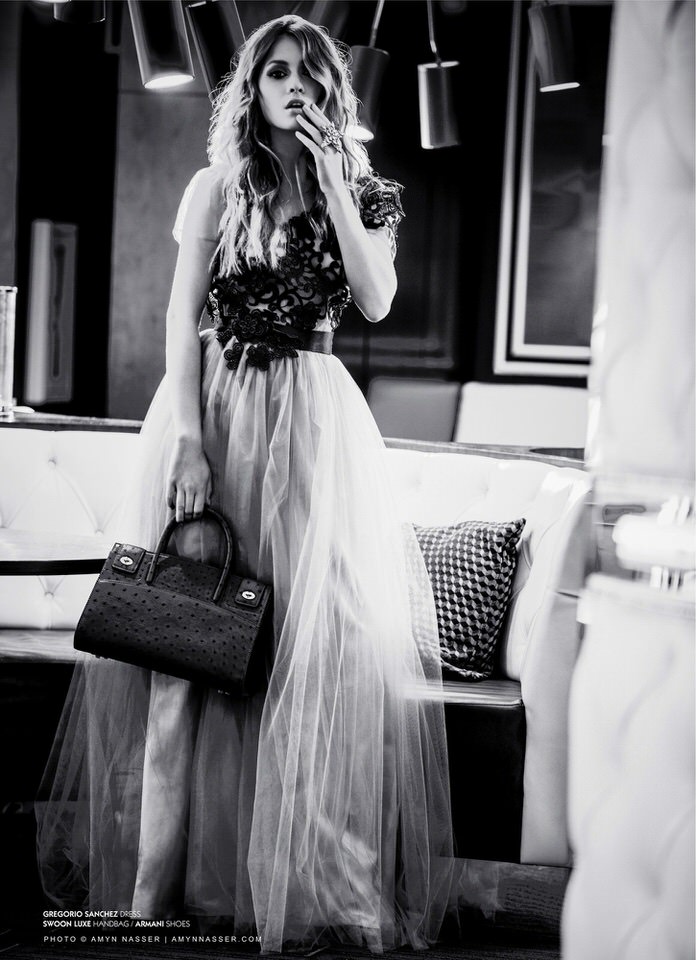
| http://amynNASSER.com | @amynNASSER |
Who are your main clients?
I have Magazine, Advertising, and private clients. Here’s one story. This one client knew of my work for about 10 years and had been following it, and did a paper for her art school on my work. So, I was visiting Vancouver. She and her girlfriends walked up to the bar in this Yaletown restaurant asked if they could stand with me because some men were hassling them. When we were talking, she realized who I was and said that she had followed my work for all this time. Three months later she gave me a call to do a nude photo shoot. Now she’s become a very close friend. Magazines are a two-way street; either I get in touch with them or they get in touch with me. Sometimes I get direct messages via Instagram. One client contacted me through a stylist and we ended up doing a shoot for a high-end handbag line. The campaign is out now. You can see it on my website and on my Instagram feed. With advertising work it depends on your contact with the art buyer or if the art buyer has been following your work. Also contacting them from time to time to stay in touch is a great way of building rapport.
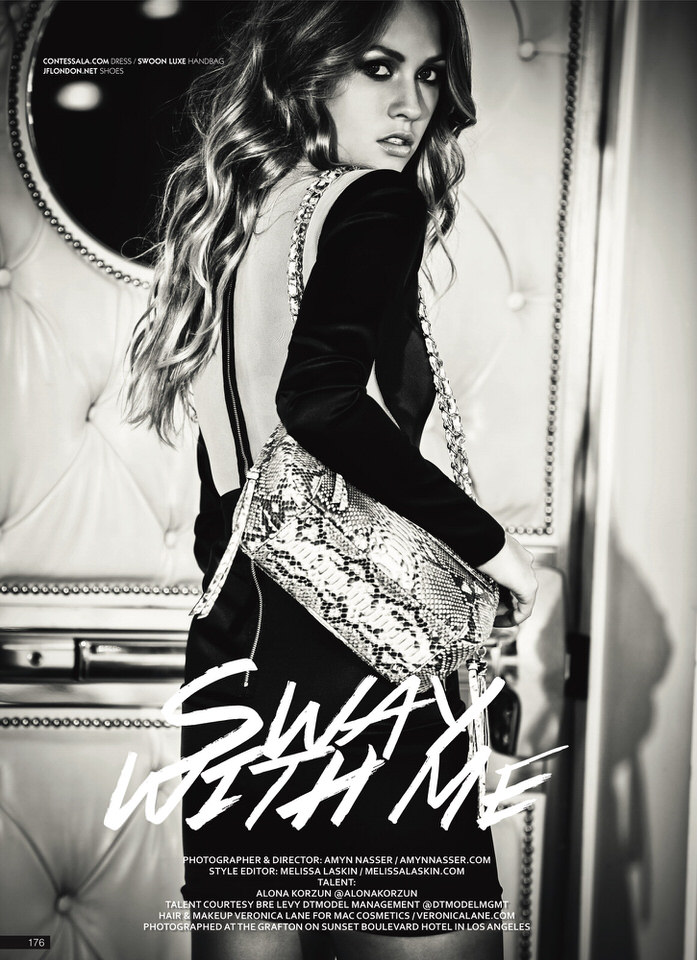
| http://amynNASSER.com | @amynNASSER |
Where do celebrities come in?
They come in when a magazine has a specific celebrity they are featuring. Or the publicist gets in touch. Some of them are in touch with me all the time because we know each other and they like the way I work. So they give me the opportunity to work with certain celebrities. These I try to turn into more of a fashion feature.
Do you approach the celebrities in the same way you approach the erotica? Don’t you get star struck?
That’s a good question. You are a little bit star struck, but it’s important to be normal; they want to be treated normally and feel comfortable. It’s always best to keep it very simple. I was very star struck when I had photographed Iman and then I was invited to meet her in her hotel room in Paris when she was visiting and David Bowie was there. I was star struck because I love his music. You just have to deal with it at the time.
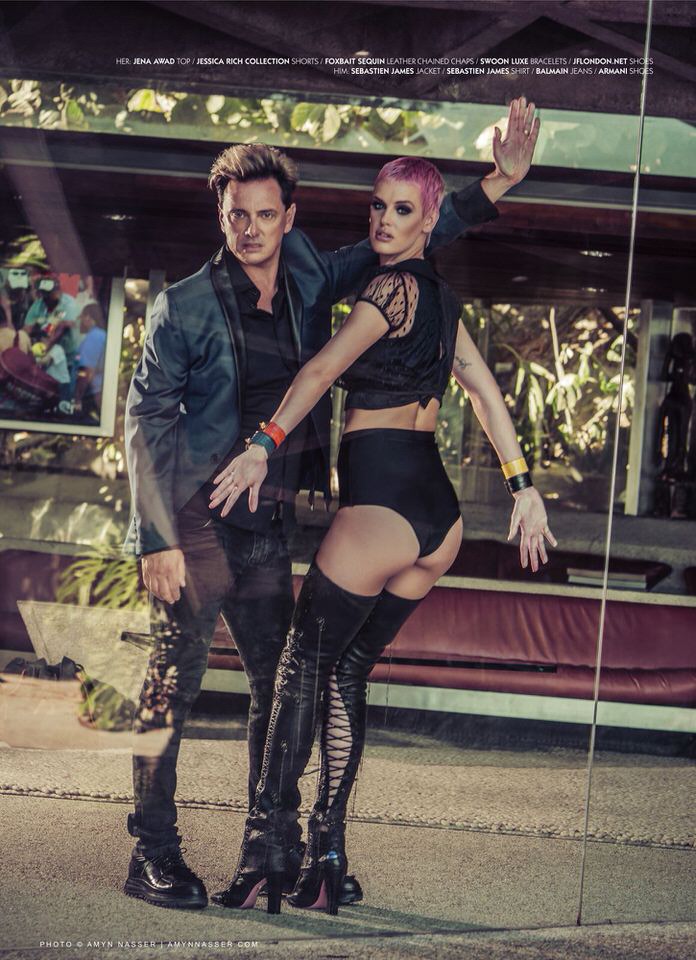
| http://amynNASSER.com | @amynNASSER |
So you’ve done Iman for fashion?
I’ve photographed Iman, Rob Lowe, Jeff Goldblum, Carl Lewis, Sandrine Bonnaire, Sheila E, Sunnyi Melles among a few. Recently Susie Abromeit, Veronica Ferres (she’s a big German actress), Eddie Murphy’s daughter, Bria where we gave her a new look never before photographed, Hannah Kat Jones (from the Disney show Austin & Ally), Marissa Hermer from the Ladies of London, the Bravo show, Donovan Leitch, James Goldstein.
How can a photographer go about to get their name out there and to get to the level of shooting celebrities?
You have to get in touch with the people who are in touch with them, and show them a good body of work that draws an interest. I’m specifically talking outside of headshots, because headshots are a certain type of style, a certain type of photography where celebrities need it for trade purposes, for their own personal purposes when they go out on calls. You want a glamorized set of images that you can approach the publicist or celebrity with directly. You can meet them in a restaurant, keep the conversation flowing, don’t take up too much of their time, but leave them with an impression. Charm is always helpful as well as being assertive and confident – at least in a matter that will make them want to call you back. Another way to go about it is by proposing stories to your local magazines including the celebrities you feel the magazine might have an interest in. Speak to the Creative or Art Director, or even the Fashion Editor of the magazine.
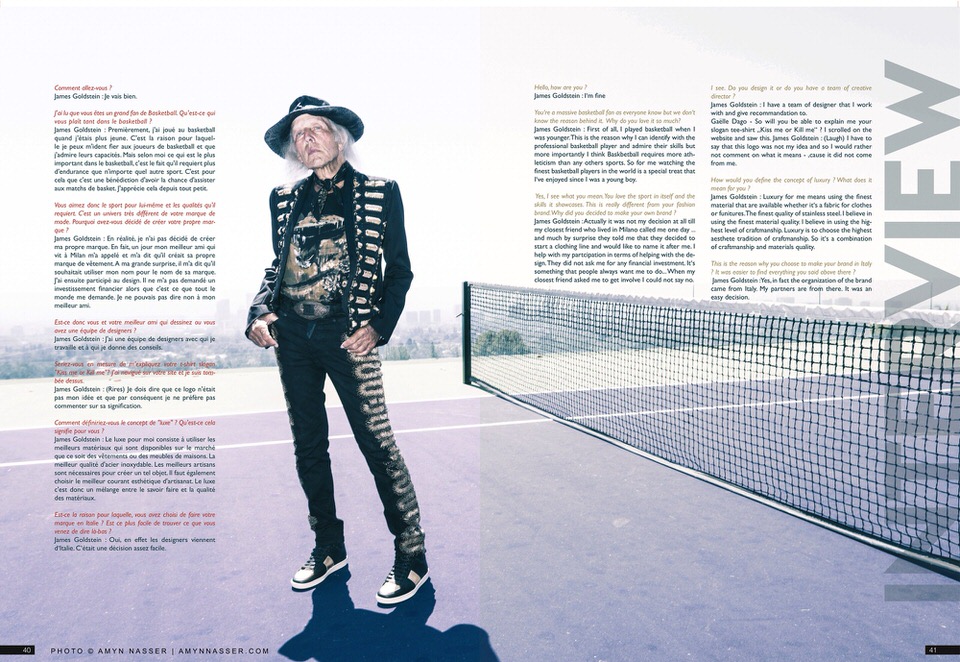
| http://amynNASSER.com | @amynNASSER |
What has been the most successful advertising for you?
I do all different kinds. Social media is extremely time consuming, but Instagram is probably the key for photographers at the moment. But there are a lot of other websites where you can also get exposure. There’s a site called Swipecast, and another called GoSee, Pressbook, and Behance. Those are all good sites however it takes time to populate all these, therefore time consuming.
What was the best piece of advice someone gave you as a photographer?
From the Art Director of Italian Vogue: take lots of pictures. From another photographer: don’t talk too much on a photo set, keep it relevant to what you’re doing. And be careful of what you’re saying so you don’t slip up. From another Art Director: always walk around your subject – when you take a look around from another point of view, you might see something totally different. I do this all the time. Rapid firing is also very important to me; I don’t take my finger off the trigger. My cameras of choice are Nikon, Leica and Hasselblad, and there are certain Nikkor lenses I love using; one lens being the 85mm 1.4 and the 17-35mm, as well as the 70-200mm. These are all internal focus and extra-low dispersion glass. There’s a Nikkor 60mm micro that I just happened to use and was very impressed with it. My lighting is Profoto – I love Profoto. On camera flashes I use quite a lot is the METZ 76MZ5; it allows me to shoot rather fast. With the fast firing I sometimes do, it has happened where the Metz flash head heated up and exploded.
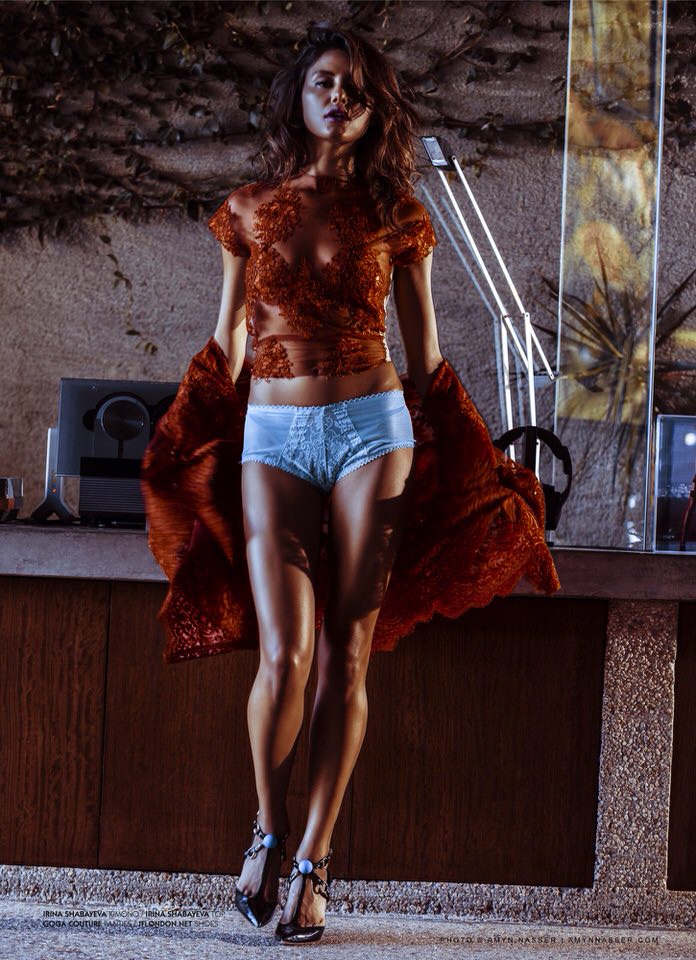
| http://amynNASSER.com | @amynNASSER |
What advice would you give to someone in photography now?
You have to understand yourself and what your likes and sensuality is what attracts you, excites you, etc. in order to come up with your style that is recognizable and stay on top of technology. And definitely buy JPEGmini Pro.
If you’d like to meet Amyn, he will be at the upcoming Exhibition and Talk at LUMAS Galleries Vancouver.
Invitation: https://goo.gl/lxjmLh | RSVP vancouver@lumas.com
Date: June 22, 2017
Time: 6:00pm to 8:00pm
Location: LUMAS Galleries, 305 Water Street, Gastown Vancouver, British Columbia, Canada
amynnasser.com
voyeurnocturne.com
licensing.amynnasser.com
Follow Amyn:
@amynnasser
Instagram
Behance
Facebook
Tumblr
http://kisskissshootshoot.com/
http://splitsecondcapture.com/

